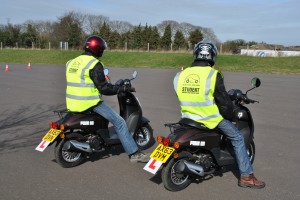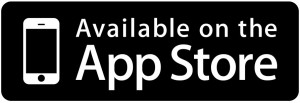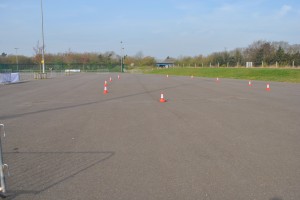Do I need to take a CBT?
If you are in any doubt as to whether you need to take a CBT then please feel free to contact us here at All Bikes Motorcycle Training Ltd. If you do need to take a CBT you will need to bring along your licence with the correct provisional entitlement (Category A for motorcycles, Category P for Mopeds) and be able to read a number plate from a distance of 20.5 metres (A123 BGD format) or 20 metres (AB50 CDE format)
Reading the highway code helps new riders to understand the road. You can either buy the book, access it at Highway Code or download the smart phone app from iTunes via this link
Courses take place 6 days a week and usually start at 0900am and finishing at around 4pm as there is a lot to get through.
Come sensibly dressed, denim jeans or a tough fabric trouser, no jogging bottoms or leisure wear. Sturdy footwear is essential to protect your feet, a walking book or work type, (no trainers, vans, toms or converse).
If your clothing is not appropriate we reserve the right, for your safety to cancel your training.
Remember to bring your licence (both parts if applicable). We also suggest you bring a lunch with you.
Due to current COVID virus we are no longer lending safety helmets, gloves or jackets. Students are required to bring their own
The course is partly theory discussion and practical training covering elements as defined by the DSA.
The course theory discussion will cover the choice of clothing and equipment as well as the basic principles of roadcraft- hazard and speed awareness for example. Practical training will cover the basics of motorcycle care as well as the correct use of the controls. It also includes riding the bike in a controlled off road site.
The final section of the CBT is a road ride of at least 2 hours in length. The sequence of the CBT training is aimed at supporting the student to develop knowledge and control of the bike before they go on the road for the first time.
You can either do your CBT on our bikes or your own. It must be road legal, taxed, MOT’d if necessary, in roadworthy condition and have ‘L’ plates front and rear. You will also need to provide insurance proof to the instructor on the day. Please note that we do not arrange collection of your bike for the course or delivery after the course is completed (or any storage of the bike). If you are using your bike or moped you need to show us your insurance and MOT if your bike is over 3 years old.
This is not a pass or fail course. It is a training course and you will receive your CBT Certificate (DL196) once the instructor and student are satisfied the course is completed.
It is important you learn at your own pace. There is no pressure to complete the course in one day. If you do not complete the course on your first day due to instructor advice or personal choice you will need to come back with the original instructor to complete the elements needed to receive a CBT certificate. If you only need element E, the 2 hour road ride this can be done on an hourly rate. However if element A-C has not been completed (control of the moped in the training area) the whole CBT needs to be repeated.
The CBT is divided into 5 elements, and before you can ride on the road you will need to satisfactory complete all 5 elements. In each element you will need to demonstrate that you have understood what has been taught before moving onto the next element.
Element A – Introduction to the CBT
In this element your instructor will explain the basics of the CBT as well as information regarding clothing and equipment.
Element B – Practical on-site training
In this element you will be introduced to the controls of your moped or motorcycle, starting and stopping the moped or motorcycle, as well as basic safety checks. In addition you will be shown the correct use of the stand as well as wheeling the bike and bringing it to a controlled stop using the front brake.
Element C – Practical on-site riding
In this element you will begin to ride the moped or motorcycle. This will include riding the moped or motorcycle in a straight line and stopping, riding slowly, showing correct use of the brakes, changing gear, riding a figure of eight, emergency stop, rear observation, turning left and right, and U turns.
Element D – Practical on-road training
In this element you will be prepared for the on-road element of the CBT. You will learn about the vulnerability of being on two wheels and how as a rider you can raise your level of conspicuity. You will also learn about speed limits and the highway code, as well as the legal requirements needed for you to ride on the road. In addition you will be taught about the importance of rear observation, anticipation, road positioning and separation distances; all important areas that prepare you for the road ride. Road surfaces, weather conditions, and the effects of alcohol and drugs will also be discussed.
Element E – Practical on-road riding
This is the final element of the CBT. Over the course of a minimum of 2 hours you will complete a road ride accompanied with your instructor who will be in radio contact with you. You will need to demonstrate you can cope safely with the variety of road and traffic conditions presented to you.


